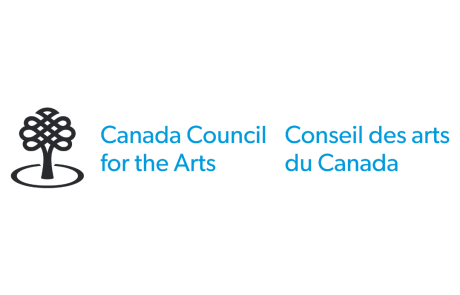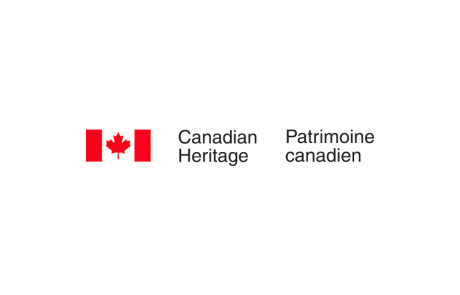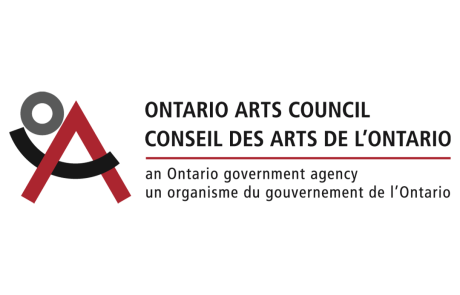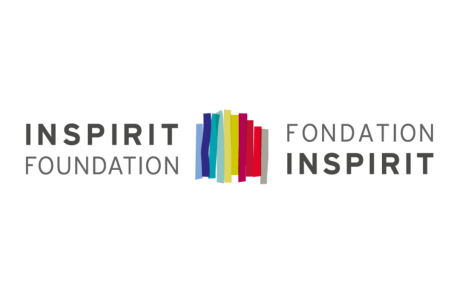Production Still from Picturing A People: George Johnston, Tlingit Photographer Documentary by Carol Geddes
Carol Geddes: Haat kanadaayí géide kei nañúý(1) (She Is Going Against The Current)
By Dr. Michelle S. A. McGeough
“What appeals to me about filmmaking is that I am drawn to the sheer power of narrative. Sharing ideas through images, sound and graphics allows a certain kind of shared consciousness that can be rare. I think we often don’t use our powers of expression to the fullest. I am thrilled when I find myself moved by expression of difficult or elusive things in media. Poetry, music and film all have that power. I’m pleased that I can work in this world and frankly still marvel at the fact that I’m even allowed in the club.”(2)
When Carol Geddes sat in her first meeting with the National Film Board, she was initially given the task of creating a film that would address the reasons for the high unemployment rate amongst Indigenous women. What she created instead was a celebratory visual essay of the lives of five indigenous women who were thriving as stateswomen, lawyers, educators and fishers. Despite systemic barriers, they were emblematic of the possibilities for Indigenous women, if you were willing to challenge the status quo. In many ways, the women in the film reflect Geddes’ own desire and willingness to challenge the prescribed roles for women in the 1980’s. Growing up in one of Canada’s more northern regions, opportunities for women were very limited. Geddes relates that, “when I was a very young teen, maybe like 13 or 14, an older woman around the age of about 19 went to Whitehorse and became a secretary, and that was truly the height of our ambitions because we didn’t see other possibilities.”(3) As a young adult, Geddes became more aware of her own capabilities and aptitudes. After leaving the Yukon, and settling in Ottawa, she enrolled at Carleton University, where she obtained an undergraduate degree in English and philosophy. Geddes had just begun her graduate coursework in McGill’s Communication department, when a family emergency necessitated a return to the Yukon. When she did return to Montreal, she was recruited by the NFB to create the film Doctor, Lawyer, Indian Chief. The message of the film is as relevant for women today, as when it was first screened.(4)
When speaking with Geddes about her career that spans over 35 years it is very evident her documentary films reflect a lot about Geddes herself. In particular two tenets that define Geddes career and work ethic; persistence and the belief in of Indigenous people and in particular the power of Indigenous women. Geddes does not shy away from identifying as a feminist, but she qualifies that she does not ascribe to the self-promotion seen in the mainstream feminist movement. Her feminist stance is informed by the desire to advance the central role that women occupied prior to the imposition of settler colonialism, that has resulted in the erosion of Indigenous women’s power. While foreign systems of governance were introduced to her community, growing up she saw glimpses of the roles of the matriarchs and the central role women occupied in her community. She also witnessed the independence of the women in her family, who controlled trade routes throughout their territory and travelled endless miles along trails throughout the Yukon by dog sleds teams. These were not women who accompanied male family members, but a sisterhood of women who supported each other as they carved out a living from the land.
Geddes’ career reflects the same value of working with others towards a common goal. She has lent her talents to help produce the films of many award winning Indigenous filmmakers. To this end Geddes has also taken on administrative roles. She was the director of the NFB’s first studio dedicated to Indigenous filmmaking. She reflects on those beginnings as “incredibly challenging, because it was a particular time in public policy when people understood that they needed to begin to open the doors for indigenous people.”(5) Even though there was a recognized need for Indigenous people to tell their own stories, the systemic barriers and the attitudes towards Indigenous people were still very paternalistic. Throughout her career Geddes recognized that Indigenous visual sovereignty was tied to the ability of Indigenous people to tell their own stories and to create stories that spoke to the realities of being Indigenous.
The realities of her own community was the subject of her second award winning documentary. Picturing a People: George Johnston, Tlingit Photographer tells the remarkable story of Geddes’ uncle George Johnson, who documented the changes brought to the Yukon community of Teslin, with the construction of the Alaska Highway. Hard truths are revealed in this film. We see archival footage of non-Indigenous people desecrating burial sites. We also learn that the living Tlingit were treated with the same disregard. While the construction of the highway provided some economic opportunities for community members, the asphalt scar carved into the land was a harbinger of the change that would come. While the documentary is a beautiful tribute to the photographer, Geddes relates that this film is personally very important to her, “it’s really incredibly important for young people to know about what happened and to understand that through all the adversity the community has and continues to survive.”(6)
More recently Geddes’ undertakings have been directed towards a younger audience. She has written and produced several live action animation projects, bringing Tlingit oral traditions to the small screen. Two Winters: Tales From Above the Earth recalls the eruption of Indonesia’s Mount Tambora in 1815. Geddes’ retelling of this the story and its effect on Indigenous people living in Canada’s north, is a cautionary tale of the impact of climate change. Anash and the Legacy of the Sun-Rock, the made for TV adventure series, follows a young Tlingit warrior and his companion on their journey to recover the pieces of the legendary sun rock to fulfill a prophecy of peace. While the series is hopeful, it also deals with the harsh realities experienced by the Tlingit that include the introduction of smallpox and alcohol. Geddes explains why she feels sharing these stories is so important, “ All of our cultures are based on storytelling. And it is through hearing those stories that ideas are reinforced. That power is reinforced, and that’s why it’s so important to bring back these kinds of stories.”(7) For Geddes, film has been an important media for sharing these stories. Central to her filmmaking practice is telling stories from a Tlingit perspective.
Currently, Geddes is working on a documentary on Yukon Land claims. For Geddes, the power of film has always been tied to Indigenous self-determination. She recognized early on in her career that the ability of First nations to interpret their own realities would only be achieved by Indigenous people taking the “means of production into our hands.“ Through film and telling our stories, we are taking our place as distinct cultures in Canada.” And while it might seem that Geddes was going against the current, she was actually forging new pathways.
1 Haat kanadaayí géide kei nañúý is Tlingit for She is going against the current.
2 Written correspondence with Geddes, June
4 Doctor, Lawyer, Indian Chief was present at Hot Docs
 Born in Teslin, Yukon, of the Inland Tlingit people, Carol Geddes’s first major film, Doctor, Lawyer, Indian Chief, won a Silver Medal for Educational Documentary in San Francisco and set her on an award-winning career in the industry. Since then Geddes, a now internationally acclaimed filmmaker and writer, has produced 25 documentary films and television programs. Her second major film, Picturing A People, won an Outstanding Achievement Award and a Gemini nomination for the Best Canadian Documentary in 1997. Whether writing, producing or directing, her prolific output has highlighted the stories and struggles of Aboriginal life in Canada. Her latest film, the animation Two Winters: Tales From Above the Earth won nine national and international awards. In 2002, Geddes was the recipient of the Queen’s Royal Jubilee Medal for her outstanding contributions to the cultural community. She has served on the Teslin Tlingit Council; The Yukon Heritage Resources Board; the Canadian Council for the Arts; the Yukon Human Rights Commission; the Canadian Conference of the Arts; the National Film Board of Canada; and the Women in Media Foundation.
Born in Teslin, Yukon, of the Inland Tlingit people, Carol Geddes’s first major film, Doctor, Lawyer, Indian Chief, won a Silver Medal for Educational Documentary in San Francisco and set her on an award-winning career in the industry. Since then Geddes, a now internationally acclaimed filmmaker and writer, has produced 25 documentary films and television programs. Her second major film, Picturing A People, won an Outstanding Achievement Award and a Gemini nomination for the Best Canadian Documentary in 1997. Whether writing, producing or directing, her prolific output has highlighted the stories and struggles of Aboriginal life in Canada. Her latest film, the animation Two Winters: Tales From Above the Earth won nine national and international awards. In 2002, Geddes was the recipient of the Queen’s Royal Jubilee Medal for her outstanding contributions to the cultural community. She has served on the Teslin Tlingit Council; The Yukon Heritage Resources Board; the Canadian Council for the Arts; the Yukon Human Rights Commission; the Canadian Conference of the Arts; the National Film Board of Canada; and the Women in Media Foundation.
Geddes is the writer, director, producer of the award-winning series Anash and the Legacy of the Sun-Rock (APTN, ACCESS and SCN Canada), a half-hour children’s quest series that tells the compelling tale of young Anash’s mission as he tries to re-unite all parts of the Sun-Rock in order to fulfill a prophecy to attain peace and protect a fragile land.
 Dr. Michelle S. A. McGeough (Cree Métis/Settler) completed her PhD in Indigenous art history at the University of New Mexico. Prior to returning to school for her advanced degree, she taught Museum Studies at the Institute of American Indian Art and was the Assistant curator at the Wheelwright Museum of the Native American Indian in Santa Fe, New Mexico. Dr. McGeough has a Master’s degree from Carleton University as well as a BFA from Emily Carr and an undergraduate degree from the Institute of American Indian Art. She also has a B.Ed. degree from the University of Alberta. Dr. McGeough currently teaches at Concordia University in the Art History department.
Dr. Michelle S. A. McGeough (Cree Métis/Settler) completed her PhD in Indigenous art history at the University of New Mexico. Prior to returning to school for her advanced degree, she taught Museum Studies at the Institute of American Indian Art and was the Assistant curator at the Wheelwright Museum of the Native American Indian in Santa Fe, New Mexico. Dr. McGeough has a Master’s degree from Carleton University as well as a BFA from Emily Carr and an undergraduate degree from the Institute of American Indian Art. She also has a B.Ed. degree from the University of Alberta. Dr. McGeough currently teaches at Concordia University in the Art History department.
Dr. McGeough’s research interests have focused on the indigenous two-spirit identity. She is a board member of Daphne, the first Indigenous artist-run centre in Tiohtià:ke. She is a co-applicant in the SSCHR Thinking Through the Museum Partnership grant, Queer Operatives, and The Morrisseau Project. Her essays have appeared in C-space, Union Docs, and an upcoming volume entitled Two-Spirit, Indigiqueer, and LGBTTQ* Interventions into Museums, Archives, and Curation. Other areas of her research include the application of Indigenous research methodologies and the incorporation of these ways of knowing into the development of curriculum and the curation of contemporary and historic Indigenous art. Currently, Dr. McGeough teaches Indigenous art histories in Concordia University’s Art History department. She is also an independent curator and has curated exhibitions for Daphne, the I.D.E.A. at Colorado College, the Indigenous Art Center in Ottawa, and the Museum of Contemporary Native American Art in Santa Fe New, Mexico.











